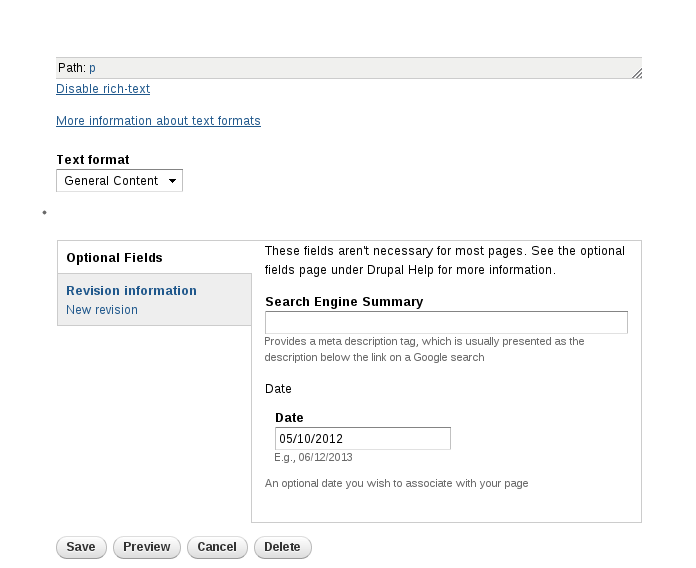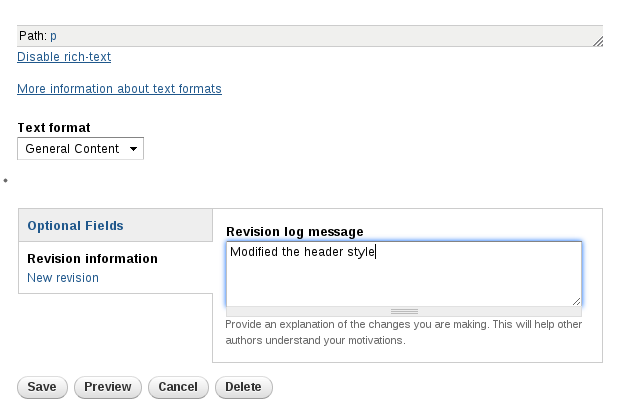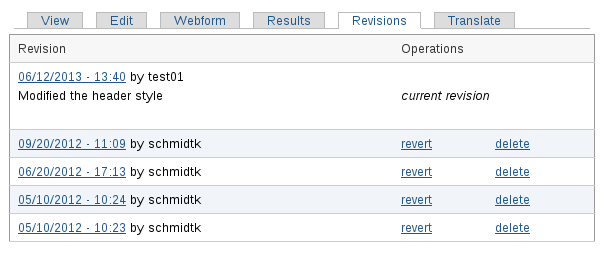When you’re editing one of our Drupal pages, you may have noticed a little tab down at the bottom, right above the save button:
 See that little grey box? The one that says “Revision Information”? That’s actually a very helpful box. In there, you’ll find a place to enter a revision log message, where you can describe the changes you made to the page, like this:
See that little grey box? The one that says “Revision Information”? That’s actually a very helpful box. In there, you’ll find a place to enter a revision log message, where you can describe the changes you made to the page, like this:
 You may not have been aware, but if you click on the revisions tab at the top of a page, you can get a list of who made changes, and when those changes were made. If everyone also includes revision log messages, then we can also, at a glance, see what was changed. And that can be super helpful:
You may not have been aware, but if you click on the revisions tab at the top of a page, you can get a list of who made changes, and when those changes were made. If everyone also includes revision log messages, then we can also, at a glance, see what was changed. And that can be super helpful:

As you can see, the first 4 revisions, by me, have no revision message. It’s very difficult to see at a glance what changes I made, or why I made them. But the most recent message, “Modified the Header Style” tells you exactly what I changed.
If we wanted an ever better message, we could have written “Changed page header from a paragraph to an H2, in accordance with the guidelines provided by the webteam”. Then we’d know not only what was changed, but why.
So revisions are awesome, right? But they work best when everyone uses them, so that if I modify your page, you’ll know what I did, and I’ll know what you did before me. For that reason, this weekend we’ll be turning on a module that enforces a revision log message. In other words, if you forget to enter a revision message, you’ll get a nasty red message that highlights the revision message box and asks you to fill it in. Please take the time to write a brief, meaningful message. It’ll help everyone out.
This change is part of a broader set of changes we’re hoping to make to the Drupal editing experience to allow more flexible workflows. Expect more details in the upcoming weeks!
